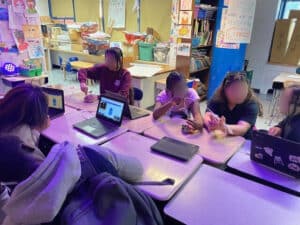When people talk about the American education system, the conversation usually centers around test scores, teacher shortages, or debates over curriculum. But U.S. schools are far more complex than the headlines suggest. Beneath the surface are surprising facts and little-known realities that shape how more than 50 million students learn every day. Whether you’re a parent, educator, or simply curious about education in America, here are 10 things you probably didn’t know about U.S. public schools.
-
There’s no single education system in the United States.
While we often refer to the “U.S. education system” as a whole, it’s really 50 different systems, governed at the state level. Each state sets its own standards, curriculum guidelines, graduation requirements, and teacher certification processes. Even neighboring school districts can vary widely, creating uneven student experiences nationwide. -
Public school funding is tied to local property taxes—creating potential deep inequities.
In most states, public schools are primarily funded by local property taxes. This means wealthier neighborhoods with higher property values often have better-funded schools, more extracurricular programs, and smaller class sizes. Meanwhile, schools in lower-income areas struggle with outdated facilities, fewer resources, and teacher shortages. -
Schools provide much more than just education.
Over 30 million students receive free or reduced-price school meals daily through federal programs. In many areas, schools also serve as hubs for healthcare, mental health services, social work, and even Wi-Fi access. When schools close, entire support systems for children and families can collapse. -
The U.S. has one of the most diverse student populations in the world.
Students in American public schools speak over 400 different languages. In many urban districts, more than 100 languages are spoken. This diversity brings both richness and complexity to classrooms, making cultural awareness and inclusive teaching practices more important than ever. -
Teachers wear more hats than ever before.
Educators today aren’t just teaching math or reading—they’re managing tech platforms, supporting students’ emotional wellbeing, translating across language barriers, and adapting to ever-changing education technology. Despite their vital role, U.S. teachers are often overworked and underpaid. -
Schools are being asked to solve complex societal issues.
From gun violence prevention to mental health crises to economic inequality, schools are increasingly tasked with solving problems that originate far outside the classroom. Educators often operate as the first line of defense for issues they weren’t trained or equipped to handle. -
Technology is advancing faster than school policy can keep up.
AI-powered tools, remote learning platforms, and virtual labs are transforming classrooms—but many districts are still catching up. Policies around digital learning, data privacy, and equitable access are often outdated, leaving schools in a constant game of catch-up. -
Standardized testing still drives the system, despite criticism.
Even though research shows standardized tests often fail to capture true learning or student growth, they remain central to school accountability, funding, and performance evaluations. Teachers frequently feel forced to “teach to the test” rather than focus on deeper, more meaningful learning. -
Educational innovation is happening—quietly and locally.
From STEAM enrichment to financial literacy programs, many schools are embracing innovative learning models. Organizations like Concorde Education are helping schools access expert-led instruction in coding, robotics, and real-world skills, proving that scalable, human-centered education is possible—even within existing systems. -
What keeps schools running is people who care.
Despite all the systemic challenges, U.S. schools continue to function because of the tireless dedication of teachers, school staff, administrators, and parents. Every day, millions of people show up to make sure students are safe, supported, and ready to learn—even when the odds are stacked against them.
